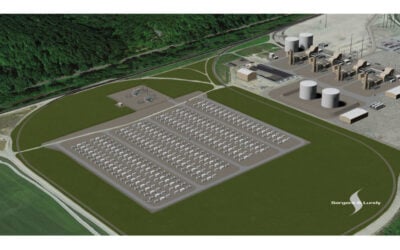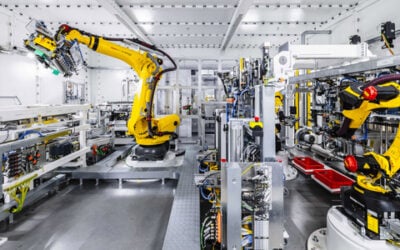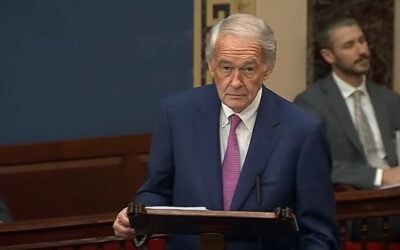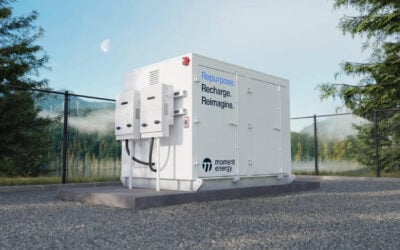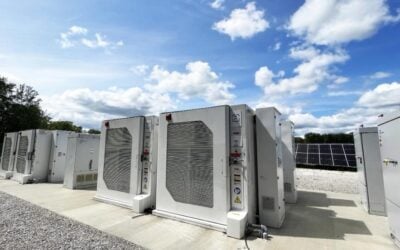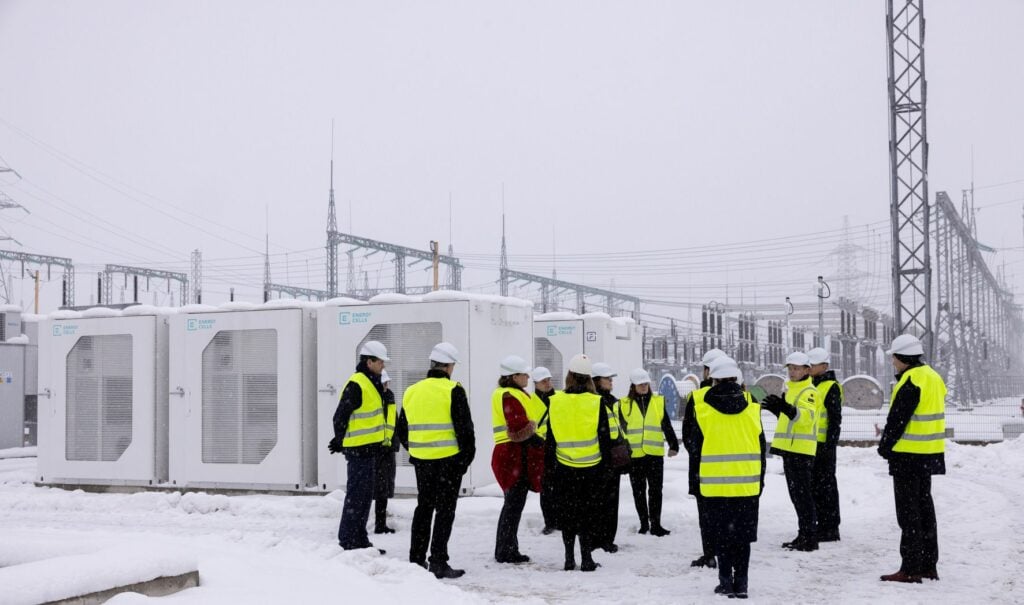
Fluence executives said the company is on track to grow its revenues by almost a third on a “multi-year” basis, leading it to break even on an EBITDA basis in 2024.
The global energy storage system integrator and manufacturer hosted an earnings call webcast yesterday to explain financial results for its Q4 and full-year 2022, which ended on 30 September. It also separately made a couple of fresh announcements regarding its manufacturing and international expansion plans.
Enjoy 12 months of exclusive analysis
- Regular insight and analysis of the industry’s biggest developments
- In-depth interviews with the industry’s leading figures
- Annual digital subscription to the PV Tech Power journal
- Discounts on Solar Media’s portfolio of events, in-person and virtual
As reported by Energy-Storage.news, Fluence has just achieved its first profitable quarter, recorded US$1.2 billion revenues for the full year, and offered revenue guidance between US$1.4 billion and US$1.7 billion for its FY2023.
While that also demonstrates considerable growth in revenues and expectations from Fluence’s US$681 million revenues in 2021, CEO Julian Nebreda and CFO Manavendra Sial said growth would be continued, but at a steadier pace. About 30% growth in revenues annually is expected over an unspecified “multi-year” period.
The company’s forecast for achieving EBITDA breakeven will be based in part on reducing operating expenses (OpEx). CFO Sial said that in 2022, operating expense represented 15.5% of revenues. While its dollar spend on OpEx is going to increase, it will only go up at about half the rate of revenue growth, according to Sial.
Ending the year with US$540 million in cash and equivalents, the majority of cash usage was driven by negative Adjusted EBIDTA, and the CFO said that trend would continue into 2023.
From headwinds to tailwinds
After a period of well-documented headwinds that have affected Fluence and other industry players significantly, from shipping and supply chain issues caused by COVID-19 to soaring lithium battery materials prices, the emphasis in the call was largely on coming tailwinds instead.
Chief among those is the US Inflation Reduction Act (IRA), and the executives quoted BloombergNEF’s estimate that the act’s US$369 billion of climate mitigation and grid strengthening incentives will provide a US$35 billion uplift to the energy storage industry. The total addressable market has increased overnight by 100GWh, BloombergNEF predicted.
That means market growth of around 40% to 50% each year, far more than the already very healthy 30% increase the US market’s size currently sees on a yearly basis.
The investment tax credit (ITC), which will now apply to standalone battery energy storage system (BESS) projects as well as to solar PV and solar-plus-storage, will have an immediate impact on downstream demand.
But Fluence said it will also reap the benefits of the production tax credit (PTC), which is applicable to domestically sourced and made products.
Having earlier this year opened its own contract manufacturing facility in Utah, US, which currently customises and finishes Fluence’s Cube BESS units manufactured in Vietnam, the company now wants to vertically integrate further.
The company will also start making battery packs at the Utah factory from 2024, according to a press release issued yesterday. It will continue to source cells from multiple vendors, but modules and packs will be made by Fluence, as well as the battery management system (BMS) technology that drives them.
CEO Nebreda said the Utah factory will have close to 6GWh annual production capacity for Cubes. Making its own modules within the US means Fluence expects to qualify for the full uncapped, direct-pay PTC at US$10/kWh.
That said, the prime motivations for manufacturing more of its customers’ projects itself are not limited to the PTC incentive. Chief product officer (CPO) and SVP Rebecca Boll said the manufacturing programme is the “next pivotal step for Fluence’s supply chain flexibility”.
Integration with Fluence’s own BMS also means it will be simpler to connect projects with the company’s suite of digital products, the bidding platform Mosaic, and the optimisation software from recent acquisition target Nispera.
“One of the key benefits to the Fluence Battery Pack is that it is easier to incorporate new cells and diversify our cell supplier base, creating competition at a cell level,” CEO Nebreda said in yesterday’s earnings webcast.
“Our Battery Pack makes it easier to swap packs in and out of new product variants. It also allows us to incorporate our own BMS technology with more granular data access system control. And it expands Fluence’s battery intelligence capabilities.”
>US$500 million Ørsted contract, transmission segment product and MoU with Thai energy authority
In other product news from the company, Fluence will also start making a BESS solution aimed at the storage-as-transmission market segment. It’s a segment Fluence has been bullish on the potential of, having been awarded a 250MW ‘Grid Booster’ transmission BESS contract in Germany, and delivering 200MW of BESS for a similar purpose in Lithuania.
The company believes the transmission segment will grow from a market of 450MW worldwide in 2022, to encompass 6GW of opportunities by 2025 and 17GW by 2030. Fluence claimed the new product, called UltraStack, will be a high-performance solution with enhanced cybersecurity, faster response time, higher technical performance and equipped with advanced controls.
As alluded to in our coverage yesterday, Fluence also mentioned a major project deal with European power company Ørsted worth more than half a billion US Dollars, had been recently contracted for.
Company leadership gave a few more details in their presentation, noting that the project is a 300MW/1,200MWh BESS in the US. The deal was signed in November for delivery and commissioning battery storage at an undisclosed location in 2023 and 2024.
Finally, this morning Fluence made yet another announcement: the company has signed a memorandum of understanding (MoU) with the Electricity Generating Authority of Thailand (EGAT).
The energy storage company and government entity will work together to develop the market for battery-based energy storage in Thailand, to help the country increase its share of renewable energy. That follows the recent signing of an MoU by another energy storage integrator-maker, Sungrow, with Thailand’s Provincial Electricity Authority (PEA) to explore possibilities for energy storage and green hydrogen in the Southeast Asian country.
Thailand has some oil and gas resources, but these are forecast to be depleted by the end of the 2020s, while the government recently upped the national target for sourcing energy from non-hydropower renewable sources to 30% by 2036, an increase of 10% from previous goals. Longer term, it is targeting carbon neutrality by 2050 and net zero emissions by 2065.

